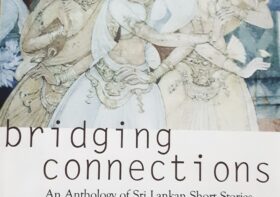Five Children and It

Written by: Pramadha Mohana, IX D, Delhi Public School, Nacharam
******
Extract –“The children stood round the hole in a ring, looking at the creature they had found. It was worth looking at. It’s eyes were on long horns like a snail’s eyes, and it could move them in and out like telescopes; it had ears like a bat’s ears, and its tubby body was shaped like a spider’s and covered with thick soft fur; its legs and arms were furry too, and it had hands and feet like a monkey’s.”
When Anthea, Cyril, Jane, Robert and Hilary (better known to readers of this book as Panther, Squirrel, Pussy, Bobs and the Lamb) stumbled upon ‘IT’ they all thought it was a rat, or a snake perhaps. But, of course, their heads knew better – what they discovered was a Psammead, (pronounced ‘Sammyadd’ for you people out there who haven’t had the hard luck of meeting one) a grumpy sand-fairy who only wants to sleep all day. However, it has one chief advantage, the power to grant wishes to anyone and everyone who can believe in its existence. However, the Psammead has been buried for so long; he is no longer able to grant individual wishes. Instead, he offers to grant the children one wish a day to share amongst them.
But wishes are tricky and can lead you to all sorts of trouble if you don’t choose your wish wisely and exactly the right way. As the Psammead puts it at one part of the story-
“You ought to be careful what you do wish for. There was a little boy once, he’d wished for a Plesiosaurus instead of an Ichthyosaurus, because he was too lazy to remember the easy names of everyday things, and his father had been very vexed with him, and had made him go to bed before tea-time, and he came and flung himself down near me in the morning, and he kicked his little prehistoric legs about and said he wished he was dead. And of course then he was.”
You might think it awful and very ‘un-fairy-like’ of the Sammyadd to grant such a terrible wish, but that is exactly the point I liked in this clause; it is your choice to resolve what you want, your own free-will to decide what you need. Besides, it’s only until sunset; after which the sand-fairy’s wishes fade away and everything returns to normal.
“They did see it [the Psammead] again, of course, but not in this story. And it was not in a sandpit either, but in a very, very, very different place. It was in a — But I must say no more.”
The book’s ending is clearly a beautiful encapsulation of sadness, surprise and suspense; it is perhaps one of the very few books I’ve liked, which is delightful enough to make me want to share it with everyone I’ve ever known.
The author narrates all this and more in a chronological order, and in distinct chapters detailing the children’s wild adventures in association with the sand-fairy. Nesbit attempts to sketch a lucid and vibrant image of the story. She induces us to imagine the amount of madness and the thousand different possibilities a grumpy little Sammyadd could offer; all in this magnificent narrative that is an amazing blend of both magic and mischief.




mythili
Quite elated to see this review of the classic.The reviewer has a beautiful way with words and her expression is both clear and complex – a rare feat to achieve!..may she read more and more ..may she become an author of repute herself,one day.